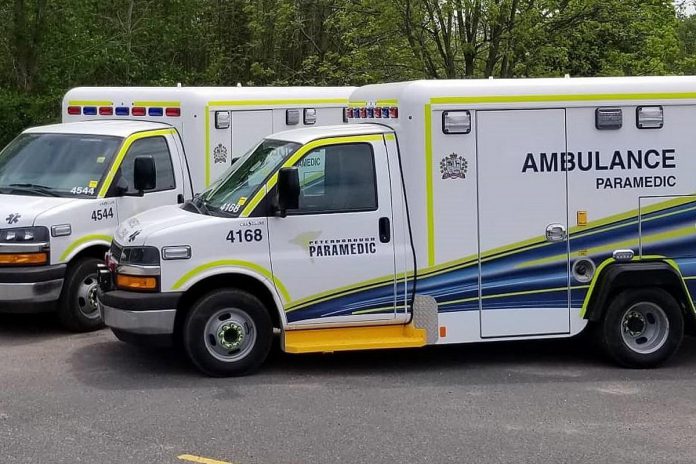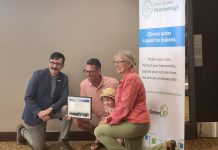
It’s a new generation of 9-1-1 out there.
Peterborough County is beginning a multi-year program to verify home address numbers to ensure emergency responders throughout the county have access to complete and accurate address data. The county is preparing for the data needs of Next Generation 9-1-1 (NG9-1-1).
NG9-1-1 is a nationwide program that involves collecting more precise location data to match first responders to a caller’s location. With work occurring between 2025 to 2027, NG9-1-1 “is designed for today’s digital world,” Peterborough County noted in a media release.
Landline owners will continue to have their home addresses recognized, but cellular callers will more accurately transmit their co-ordinates to emergency responders.
Tammy Sikma, Peterborough County’s manager of corporate data and GIS, told kawarthaNOW residents can expect to see Peterborough County staff on the roads this summer in their county marked vehicles. The employees will be wearing uniforms and carrying identification badges as they travel throughout the county to verify civic addresses.
“Next Generation 9-1-1 or Next Gen 9-1-1 or NG9-1-1 is a program rolling out all across Canada and it also exists in the United States,” Sikma said. “It’s basically an update of the old 9-1-1 system that was developed decades ago, implemented in Peterborough County in 1999, to handle analog calls — when your phone was plugged into your wall and the address was stable — to now handle the actual 90 per cent of calls, roughly, that are made by cell phone (users).”
“Right now, your position with a cell call is dictated by the strength of the cell towers that it’s bouncing off of and (responders) try and triangulate that call, and that’s why there are a lot of questions about (exact location),” Sikma explained. “The positioning will become better as the cell phones now transmit the position of the caller, and the new system is built for digital, so it places the call on a map and it shows the boundaries that the different responders fall within so your point is located within those boundaries.”
NG9-1-1 is regulated by the Canadian Radio-Television Telecommunications Commission (CRTC), with guidance from the commission’s Emergency Services Working Group comprised of telecommunication service providers, public safety answer points (call centres responsible for answering 9-1-1 calls), and 9-1-1 industry specialists.
The public can assist the county in its efforts to migrate to NG9-1-1 in the following ways:
- Keep address signs clear and visible at the roadway or on structures at all times in accordance with the township requirements.
- Download the What3Words app to mobile devices and provide the unique three words to emergency dispatchers to help first responders pinpoint a location when residents aren’t at a location that has an address. For example, callers might be hiking, boating, or doing farm work when they require emergency assistance.
- Verify their address, street number, street name, and location using the Peterborough County and First Nations address authenticator tool at ptbocounty.ca/addresstool.
The CRTC is taking the lead on NG9-1-1 because it regulates telecommunications providers — the telephone and cell service companies that create the networks that connect 9-1-1 calls to emergency call centres. When a 9-1-1 call is received, these centres dispatch emergency responders, such as police, firefighters, and paramedics, the CRTC explained on its website.
NG9-1-1 will give Canadians improved emergency services using world-class telecommunications networks, the CRTC noted. The move to NG9-1-1 will occur gradually in the coming years.
To learn more about NG9-1-1, visit the CRTC website at crtc.gc.ca/eng/phone/911/gen.htm.


























